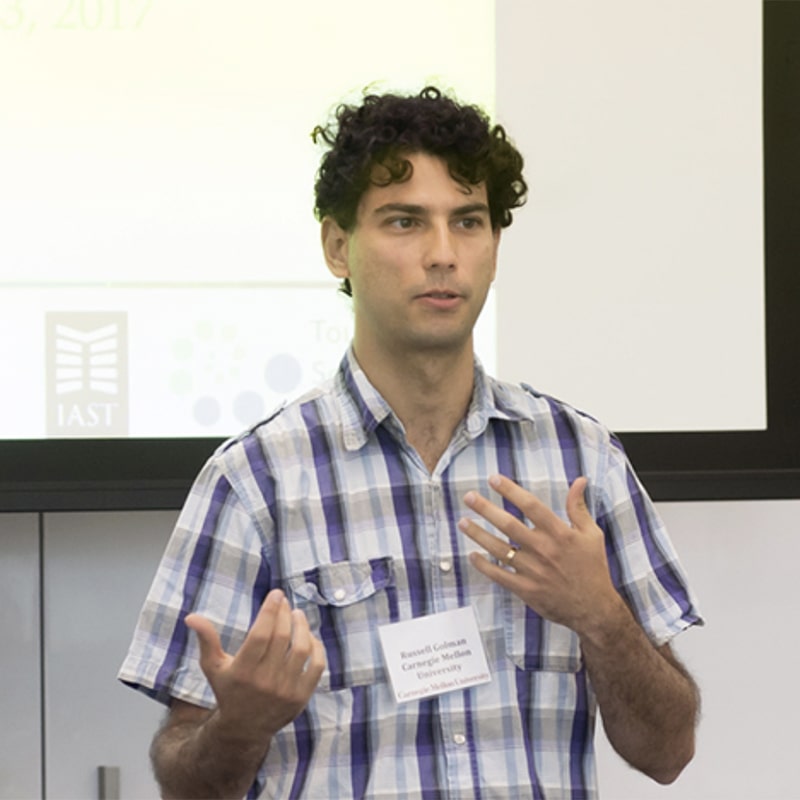Why Clickbait Makes You Curious and Caloric Content Doesn’t
A new study explores the reasons why people seek information and why they avoid it
By Stacy Kish
In the modern media environment, it is incredibly difficult to cut through the noise to share relevant information that will lead to improved decision making. There is a lot of information out there, yet it remains unclear what, if anything, will get noticed. Researchers at Carnegie Mellon University’s Dietrich College of Humanities and Social Sciences sought to understand when and why people either seek information or avoid it. They find it comes down to attention. The results are available in the December issue of Management Science.
“People are drawn to or avoid information based on feelings as much as on cold assessments of whether it’s useful,” said Russell Golman, associate professor in the Social & Decision Sciences Department at CMU. “You become curious when a question captures your attention. You avoid information when you don’t want to pay attention to it.”
People need information to make decisions but often struggle when this information challenges existing beliefs, portends bad outcomes or sheds light on a previously hidden problem. Current analytical approaches assume that information is desired only to the extent that it enhances the decision-making process, but these approaches ignore the diverse reasons why people seek out or avoid information.
Golman and his colleagues have developed a unified theory that integrates a wide range of motives. They ran experiments testing and confirming three predictions about what drives people to acquire information. First, they set up information to make it ‘feel’ more important even if it was not useful. Next, they looked at how distraction or fading attention affects curiosity. Finally, they explored how desire for information is affected by the prospect of hearing good versus bad news.
The results suggest that grabbing attention drives curiosity and that people have preferences on what grabs their attention. To engage curiosity, it helps to raise a specific question.
“It is not enough to get people to think about the topic generally,” he said. “You want them to think specifically about what they don’t know, but could find out. You need to attract people’s attention to that particular piece of information.”
Andras Molnar, a scholar of behavioral decision-making at Chicago Booth Center for Decision Research and a co-author of the paper, explained that this concept is exactly how clickbait works. Clickbait raises questions that were not at the forefront of the mind and draws the reader’s attention to increase curiosity.
“In a sense, clickbait creates a feeling of deprivation out of thin air, highlighting that there is some juicy bit of information right in front of you that you don’t have, but could easily obtain,” said Molnar. “Think of the times you scanned down a list of headlines and saw one that said, ‘See what this celebrity looks like now,’ or the ‘17 most fascinating trees in the world’.”
On the other hand, sometimes people need a little extra push to get useful information. According to Golman, when faced with information that would be good for one to know but potentially painful to receive, it comes down to a tug-of-war between an individual’s desire to refine their beliefs compared to the desire to not focus attention on anticipated beliefs. In this situation, engaging curiosity can help.
Encouraging people to eat healthier requires more than posting caloric information. According to Golman, offering information that is relevant to questions people are already asking or might find interesting is more effective.
“Before coming up with this theory, we did not understand how curiosity fit together with information avoidance” said Golman. “But now we see how attention determines what we want to know and what we don’t.”
Golman and Molnar were joined by George Loewenstein and Silvia Saccardo at CMU on the project titled, “The Demand for, and Avoidance of, Information.” This project received support from the National Science Foundation.
